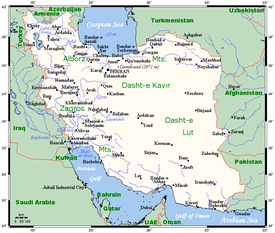
The history of newspaper and book publication in Iran can be traced back to the mid 19th century when Mohammed Shah, the third Shah of Qajar dynasty was in power (1834-1848). It is also documented that the flashing history of print in Iran started with Zaboor-e Davood in Jolfa district of Isfahan, a province in central Iran, during the mid 17th century and regular printing began with the Fath-Nameh and Jahadieh ressaleh (thesis) in Tabriz of Azerbaijan, a province in northwest Iran, during the early 19th century. However, there are some discrepancies and arguments between researchers and historians about the above facts. Also some scholars believe Fath-Nameh and Jahadieh are not two separate titles but two different editions of the same book, which is highly unlikely. The reliable evidences indicate the first Iranian who founded publication facilities in Iran was an educated technocrat named Mirza Mohammad Saleh Shirazi. Some documents reveal that he was born in Kazeroon, a small city located to the west of Shiraz, which is the center of Fars province in south of Iran. The exact dates of his birth and death are unknown. It should be noted that by the early 19th century Iranian reformers had become keenly sensitive to what they perceived as the relative weakness of their society in comparison to the growing threats from Russia to the north and the British authorities in the south. In order to transform Iranian society, reformers in the Qajar government sent students to Europe in order to study the new scientific and technological developments that were seen as the secrets of European strength. Among the first of these students to travel abroad was Mirza Saleh Shirazi, who was sent to Britain in 1815. Mirza Saleh's interest in the media and journalism during his stay in Britain as well as his recognition about the importance of the print industry compelled him to learn this science and technique. He was trained under a British publisher named Dunce and after proficiently learning the craft, brought back with himself upon his return to Tabriz in 1837 the necessary printing machinery, equipment and materials. Mirza Saleh moved his publishing house from Tabriz to Tehran in 1846 and printed the first lithographic newspaper of Iran. In fact, lithography was invented around 1796 in Germany by an otherwise unknown Bavarian playwright, Alois Senefelder, who accidentally discovered that he could duplicate his scripts by writing them in greasy crayon on slabs of limestone and then printing them with rolled-on ink. Because the local limestone retained so relentlessly any crayon marks applied to its surface, even after repeated inking and printing, lithographs (so called from the Latin for stone, litho, and mark, graph) could be printed in almost unlimited quantities. The first lithographic newspaper of Iran was only published for three years from 1846 onward
The major specific of this publication was that it went to print under the autocratic order of Mohammad Shah Qajar and not for the fact that there was a public need for it. Secondly, the objective for its publication was to communicate the decisions taken at the royal court and neutralization of activities of Fathali Shah's children, who had then made claims to the throne of Mohammad Shah who was not Fathali Shah's son
The unnamed publication of Mirza Saleh, which he later called Kaghaz-e-Akhbar (a literal translation of its English version, newspaper), had a little to do with the reform and development trend of the time. Possibly, no one knows how many issues of the newspaper were actually published. The first article of this paper was more in tune of giving advice to rebellious princes and the glorious services of Mohammad Shah as well as the tendency of the status quo and the royal court for the welfare of the peasants. Furthermore, the newspaper was entirely a state owned paper and people had nothing to do with its make up and reading
Kaghaz-e-Akhbar was something of latecomer to the world of government journalism in the Middle East. In Egypt, the independent-minded Ottoman Governor Mohammad Ali had established the Vaghay al-Misriya or the Egyptian Chronicle in 1828. And in 1831, under the direction of the Ottoman Sultan, Memhed II, Taghvimi al-Vaghayeh or Calendar of Events had been already produced in the Ottoman capital, Istanbul. Many researchers also doubt and question the existence of Mirza Saleh's printing house at around that time (1837-1846). They have claimed they were unable to locate any printed works that was published in that print house or any evidence that it continued its activity. But the existence of books that have remained from that era including a copy of Golestan, an anthology of prose and verses by poet Saadi, which has beautiful ornamented printing dispels all of those claims. Regrettably, with a very few exceptions in some short periods, the PAPER JOURNALISM and book publication in Iran have still remained under the governmental control and censorship since Mirza Saleh published his first newspaper in 1846. However, today's technology of information highway allows for an underground press that goes well beyond hand-pressed revolutionary newspapers smuggled in from abroad, or audiocassettes circulating clandestinely in the bazaars and mosques of the major cities. The opposition movement has also made extensive use of the Internet and ONLINE JOURNALISM flourishes all over the country. And the new generations of Iranian journalists are producing newspapers and periodicals on the Internet that are asking brave questions, challenging the authority of the country, and working again and again to bring voices of dissent into the public sphere
Manouchehr Saadat Noury, PhD
Originally published online in 2005
Originally published online in 2005